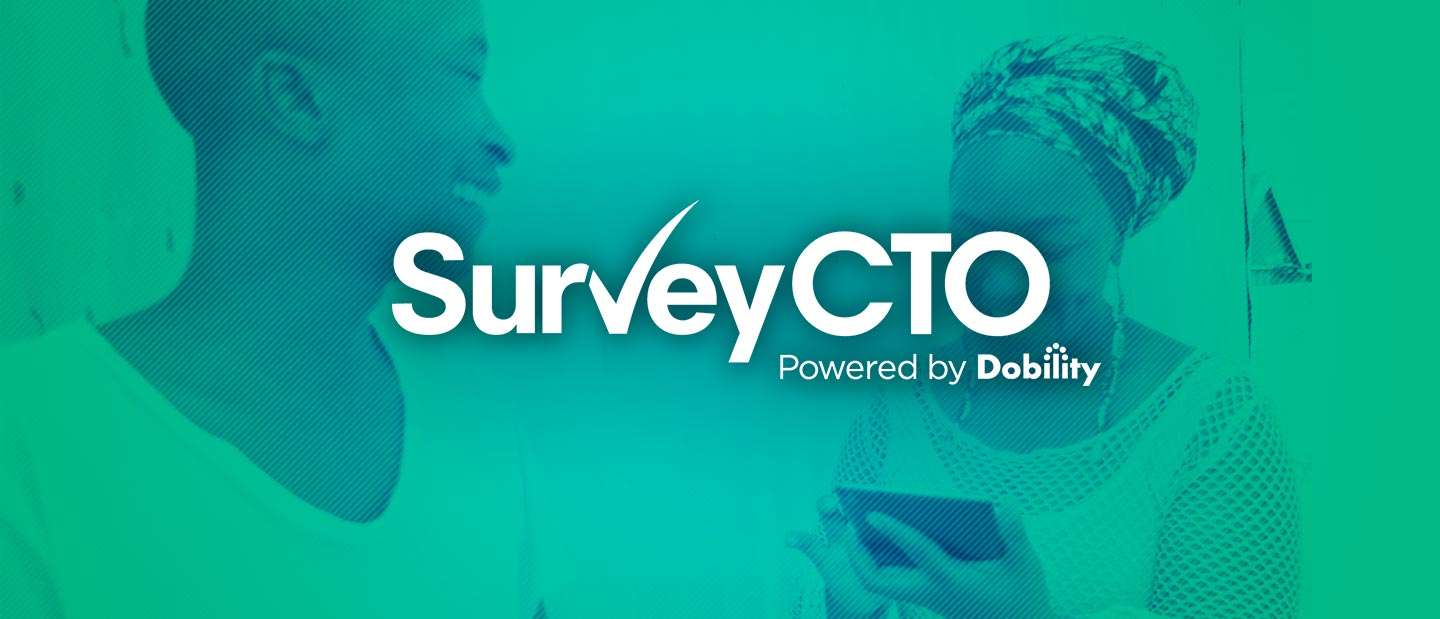
If you work with service providers or survey firms, you can insist that they use digital data collection technology like SurveyCTO and set up simple yet powerful systems for quality control and real-time monitoring.
To help you make the case for digital data collection with your service provider, we’ve created the resources below. Feel free to adapt these materials when discussing SurveyCTO with your current provider or when you are developing project requirements in the future.
ON DATA QUALITY AND QUALITY CONTROL
Questions you can ask your service provider:
- Do you use digital data collection tools?
- What steps do you take to ensure data quality?
- Do you program the surveys to reject or confirm responses that look out-of-range or otherwise incorrect?
- Do you program surveys to automatically include, skip, or customize questions based on earlier responses?
- Do you program surveys to collect GPS positions? If so, how do you use those GPS positions in your monitoring efforts?
- Do you program surveys to collect corroborating photos, video clips, audio recordings, and respondent signatures? If so, how do you use them?
- Do you program surveys to perform random audio recordings during interviews?
- Do you program surveys to automatically track when enumerators are moving through a survey form too quickly and invisibly record audio to facilitate later review?
- Do you monitor the data daily as it comes in?
- What are your procedures for flagging potential signs of trouble, following up, and correcting problems?
- Do you configure automated quality checks to review the full dataset nightly and flag potential problems — such as an enumerator whose responses systematically differ from those of other enumerators?
SurveyCTO offers all of the quality control features mentioned above and many more.
These features can enable you to actively monitor your project, directly listen in to actual surveys that took place in the field, and bypass any intermediaries — even from thousands of miles away. This ensures a level of access to what is happening in the field unlike anything that has been possible before (and at almost zero cost, since you don’t need to physically be in the field!).
ON DATA SECURITY
Questions you can ask your service provider:
- How do you keep data secure?
- Do you encrypt all data in transit?
- Do you encrypt data at rest on the device?
- Do you encrypt data at rest on the server?
- Who is able to view unencrypted data? Can server administrators? Hosting providers? Others? Or only authorized members of your project team?
- Do you provide the option for cold-room support whereby downloaded data will first be transferred to a computer that is completely disconnected from the internet and will only be decrypted and viewed on that computer?
SurveyCTO allows you to collect and manage your data using industry-leading security measures, which ensures that any sensitive or identifying data your service provider is collecting on your behalf is well-protected, your respondents’ privacy is maintained, and your project meets the IRB and human subjects ethical guidelines it needs to follow.
Your project’s cloud server, powered by SurveyCTO, is hosted in Amazon Web Services (AWS) data centers that utilize the strongest firewall technology available and are monitored 24/7. The servers have been audited and are compliant with various global security standards, including SOC 1, SOC 2, SOC 3, PCI DSS Level 1, ISO 9001, ISO 27001, ISO 27017, ISO 27018, IRAP, FIPS, FedRAMP, and many others. (The full list of certifications can be found here.) AWS data centers are also protected by physical guards and CCTV at all times. We handle all of this, so that your service provider (and you) do not have to worry about it.
In addition, all data in transit (for example, data sent from devices in the field to our SurveyCTO cloud server or data downloaded from our cloud server to your or your service providers’ computers) is encrypted using industry-standard Secure Sockets Layer (SSL) encryption. In addition, service providers can use a 2048-bit public/private key pair to encrypt data at rest. As soon as a survey is completed on a device, it is fully encrypted using the encryption key. The data remains encrypted while resting in the cloud servers and even the SurveyCTO engineering team is unable to access or view the data. Only you can decrypt the data after you download it onto your computers, using a private decryption key that only you possess. We encourage you to make your service providers use this encryption option.
For clients that require an additional layer of security, we are also able to offer cold-room support: downloaded data will first be transferred to a computer that is completely disconnected from the internet and will only be decrypted and viewed on that computer.
ON TURN-AROUND TIME
Questions you can ask your service provider:
- When will my data be available?
- Do you offer real-time access to all of the raw data, and even audio recordings and other quality checks as it comes in from the field?
- Do you offer the ability to automatically stream data to Google Sheets or Fusion Tables (for easy viewing and sharing) or to a custom external database?
With SurveyCTO, your data is available as soon as your service provider collects it.
Direct and immediate access to your data via the cloud ensures that the data you are getting is unmodified and not tampered with in any way by your service provider. You can directly download collected data from SurveyCTO’s servers, choose to stream it to a Google Sheet or Fusion Table that is updated in real-time as data is collected, or use SurveyCTO’s API to directly stream and map data to custom external databases that you have.
If you want direct access to your raw data, as it comes in, your service provider may charge you extra so that they can run a separate SurveyCTO server just for you. That way, you have full, unfettered access to your forms and data, without compromising the security of the service provider’s other clients. You can see how much SurveyCTO servers cost at our transparent pricing page.
Compare this to a paper survey where data must be entered into the programmed template by trained data-entry operators. For each form or questionnaire, typically two entries are completed, they are compared, and any differences between the two are corrected. Depending on the scale of the project, data entry can take weeks or months, and it is incredibly difficult to prevent tampering of the data during the entry process. Without directly reviewing the physical paper surveys – which might be thousands of miles away from where you are located – it is impossible to verify what was recorded as the original, raw data… unless you scan every page of every survey, which would be incredibly costly.
ADDITIONAL RESOURCES
Follow these links to learn more about:
- Choosing between digital and paper data collection
- SurveyCTO’s security and reliability features
- Considerations for institutional review boards
If you have any additional questions, please don’t hesitate to contact us at sales@surveycto.com.




